Meet The Swiss Guard: 500 Years Of Protecting The Papacy
VATICAN CITY — The U.S. president has the Secret Service as protection. The pope has the Swiss Guard.
Who are these men donning multi-colored uniforms designed during the Middle Ages who march around St. Peter’s Square?
It all dates back to the late 1400s, when guardsmen began serving the Papal States. In 1505 the Swiss bishop Matthaus Schiner, who later became a cardinal, proposed to Pope Julius II the creation of a permanent Swiss contingent that would operate under the direct control of the pope.
READ: As Visitors Pack Rome, The Vatican Awaits Its ‘Moment For Evangelization’
On Jan. 22, 1506, the first contingent of 150 Swiss guardsmen — led by Capt. Kaspar von Silenen — arrived in Rome.
These soldiers quickly earned a reputation for their bravery. During the Sack of Rome in 1527, only 42 of the pope’s 189 guardsmen died defending Pope Clement VII.
Centuries later, the Swiss Guards prepared for a similar occurrence during World War II, when they took up a defensive posture as the Germans marched into Rome. In the end, Adolf Hitler chose not to attack the Vatican.
Thirty-four new guards were sworn in this past May ahead of what will be a busy year for the Vatican.
“We'll be getting back to pre-COVID levels. Its a breath of oxygen which will enable us to face the Jubilee in a more comfortable way," said Corp. Eliah Cinotti, a Swiss Guard spokesman.
Religion Unplugged got a sneak peek this week at the Swiss Guard’s barracks, near the entrance of Porta Sant’Anna, a training session and weapons room. Here’s everything you need to know about the world’s smallest army who defends the pope and guards Vatican City:
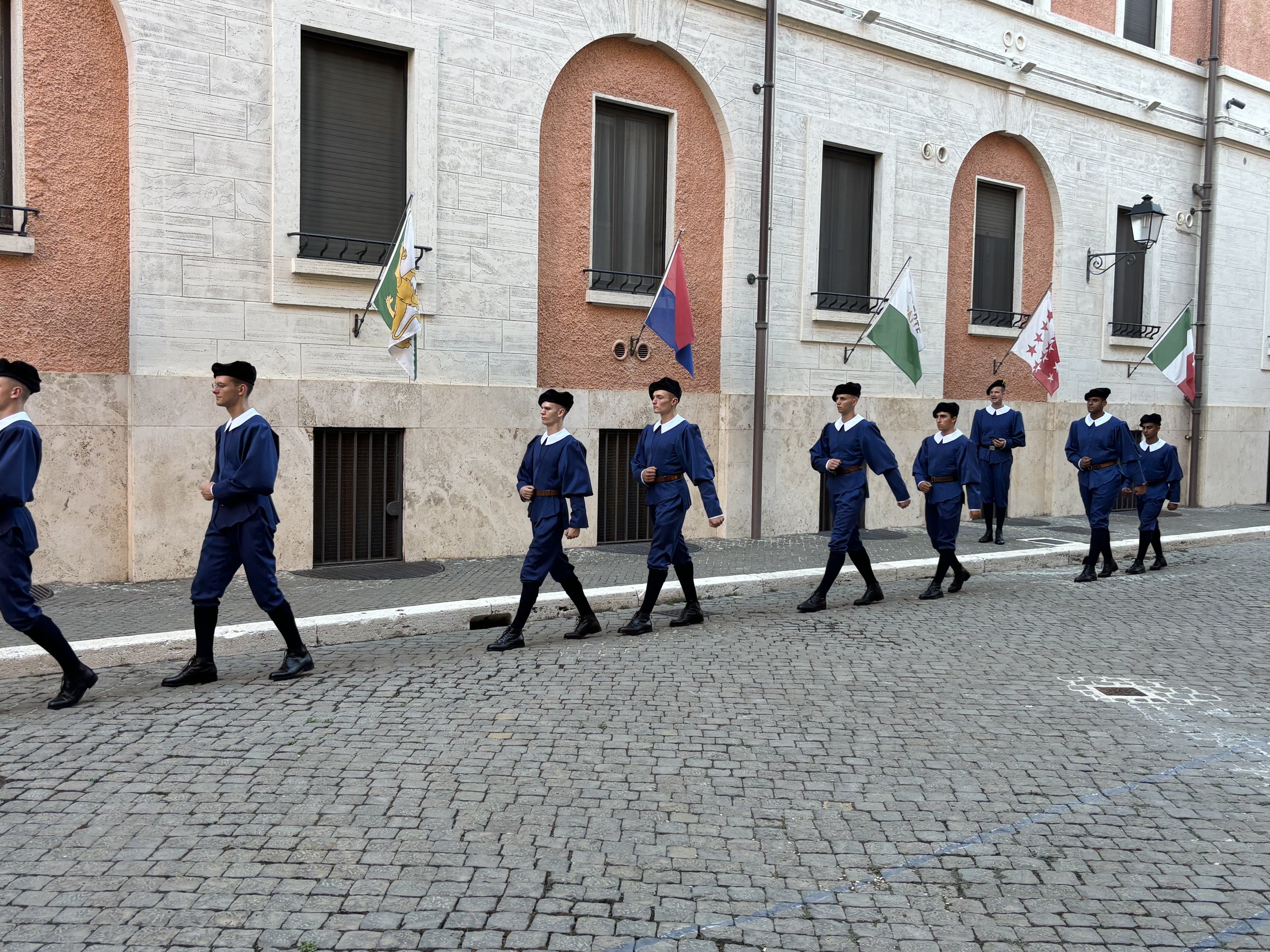
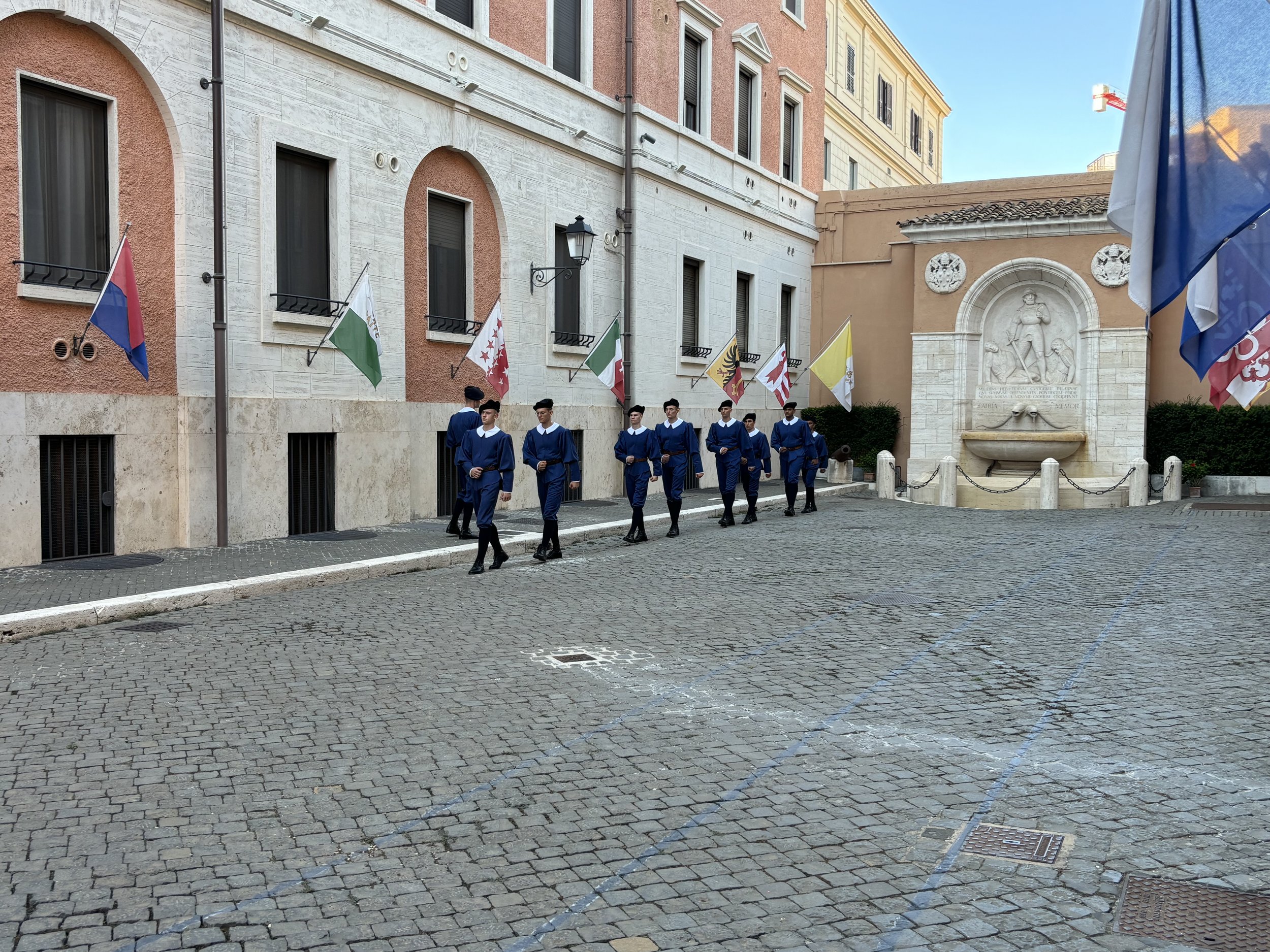
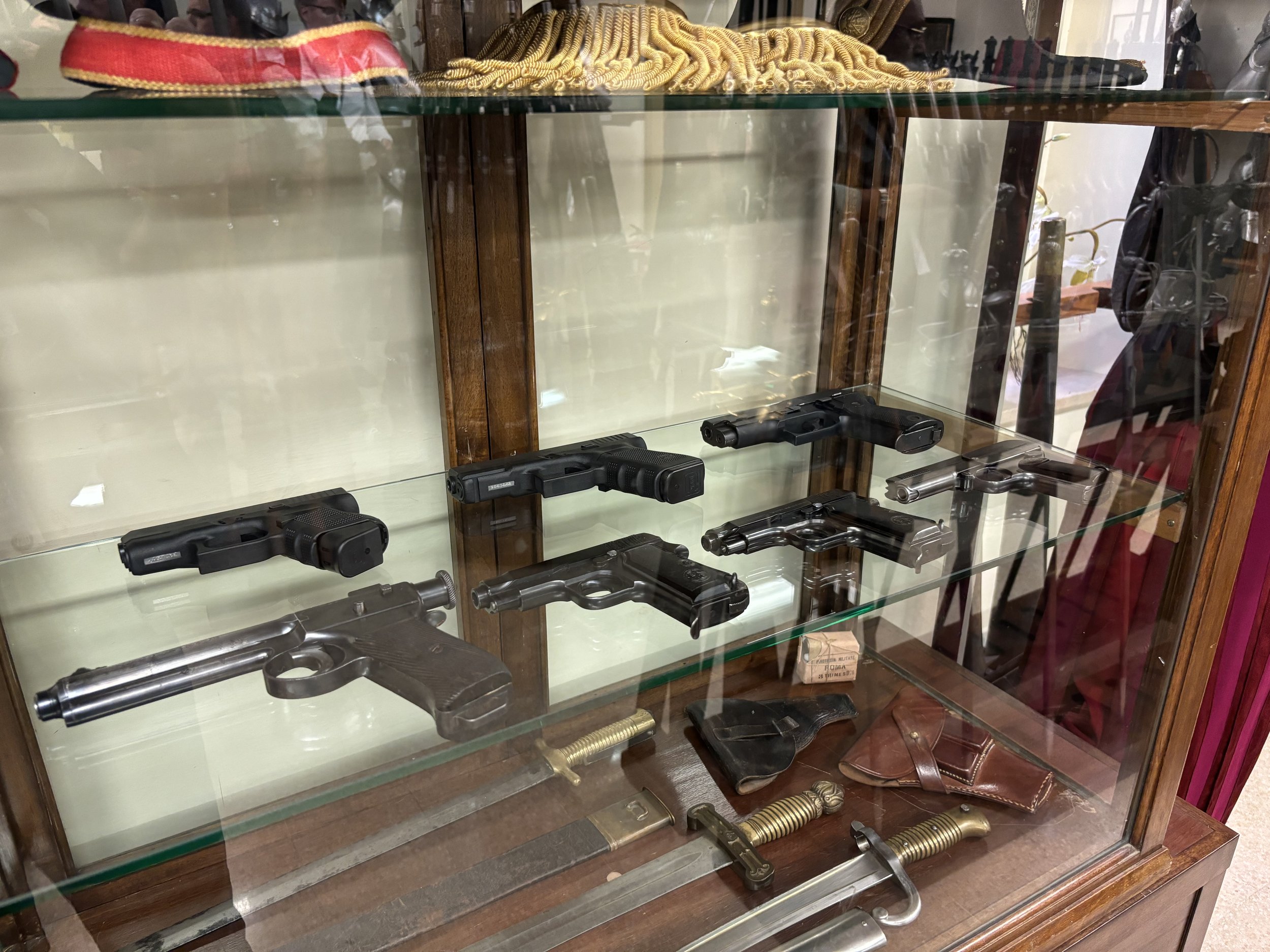
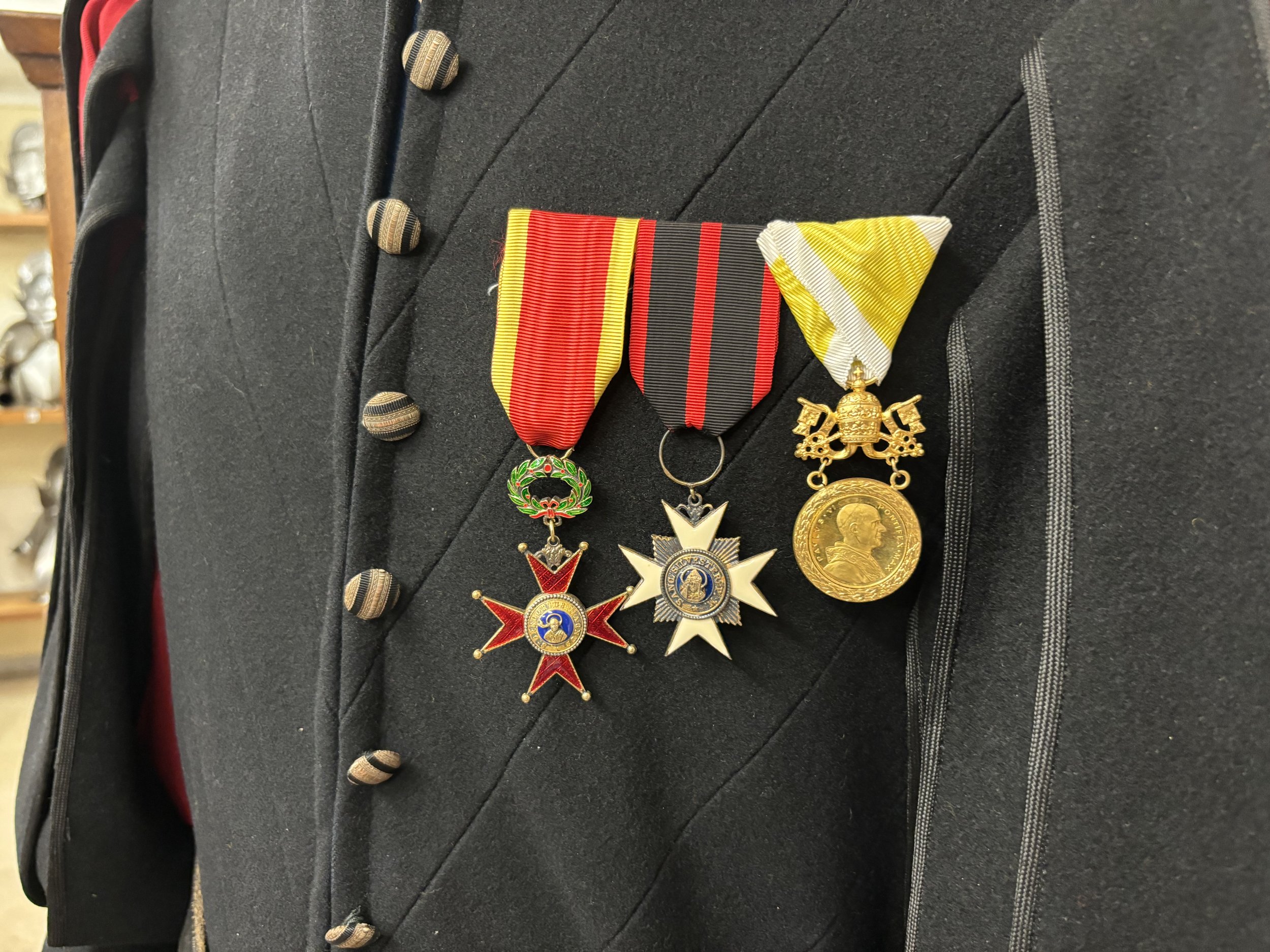
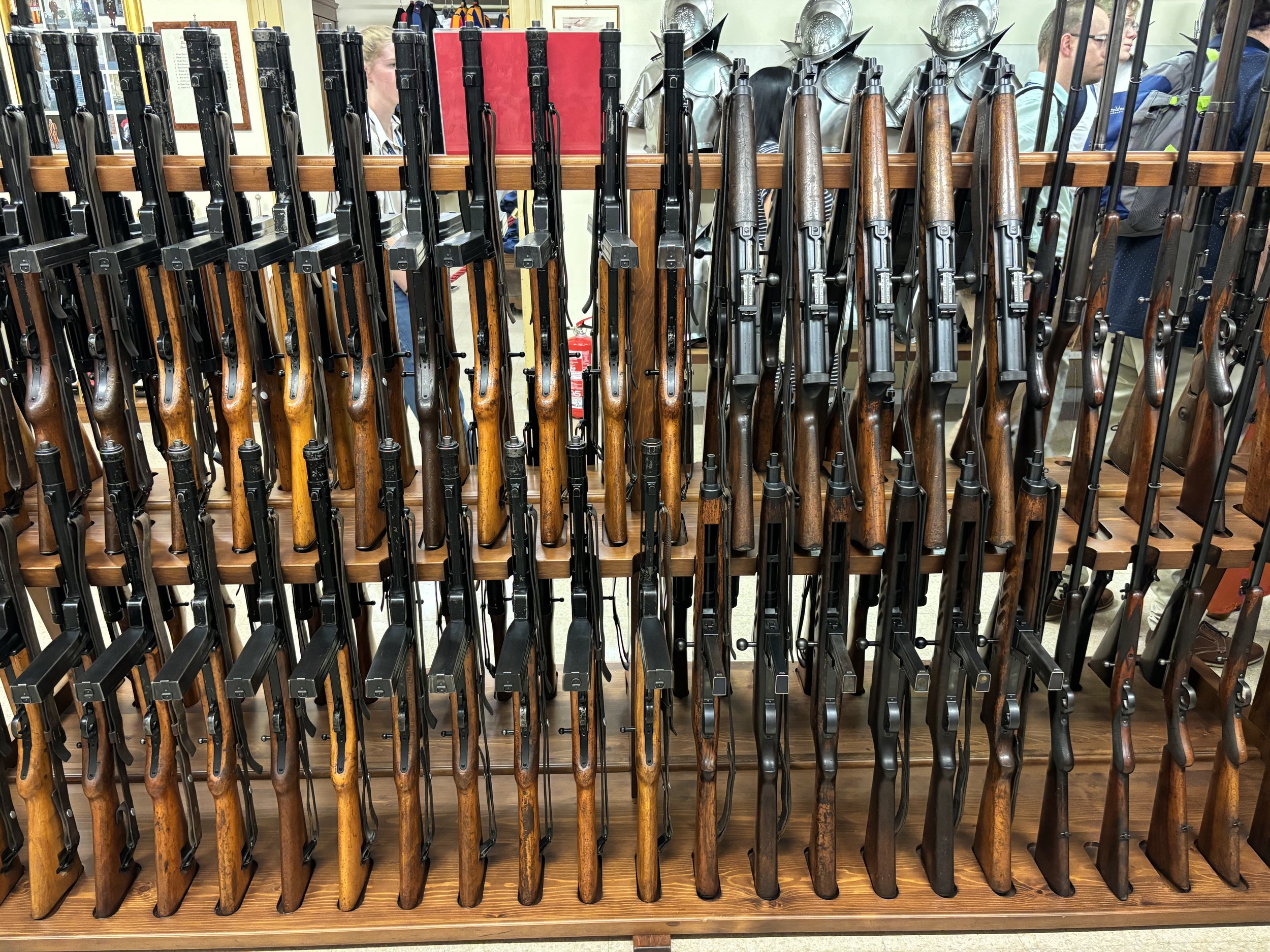
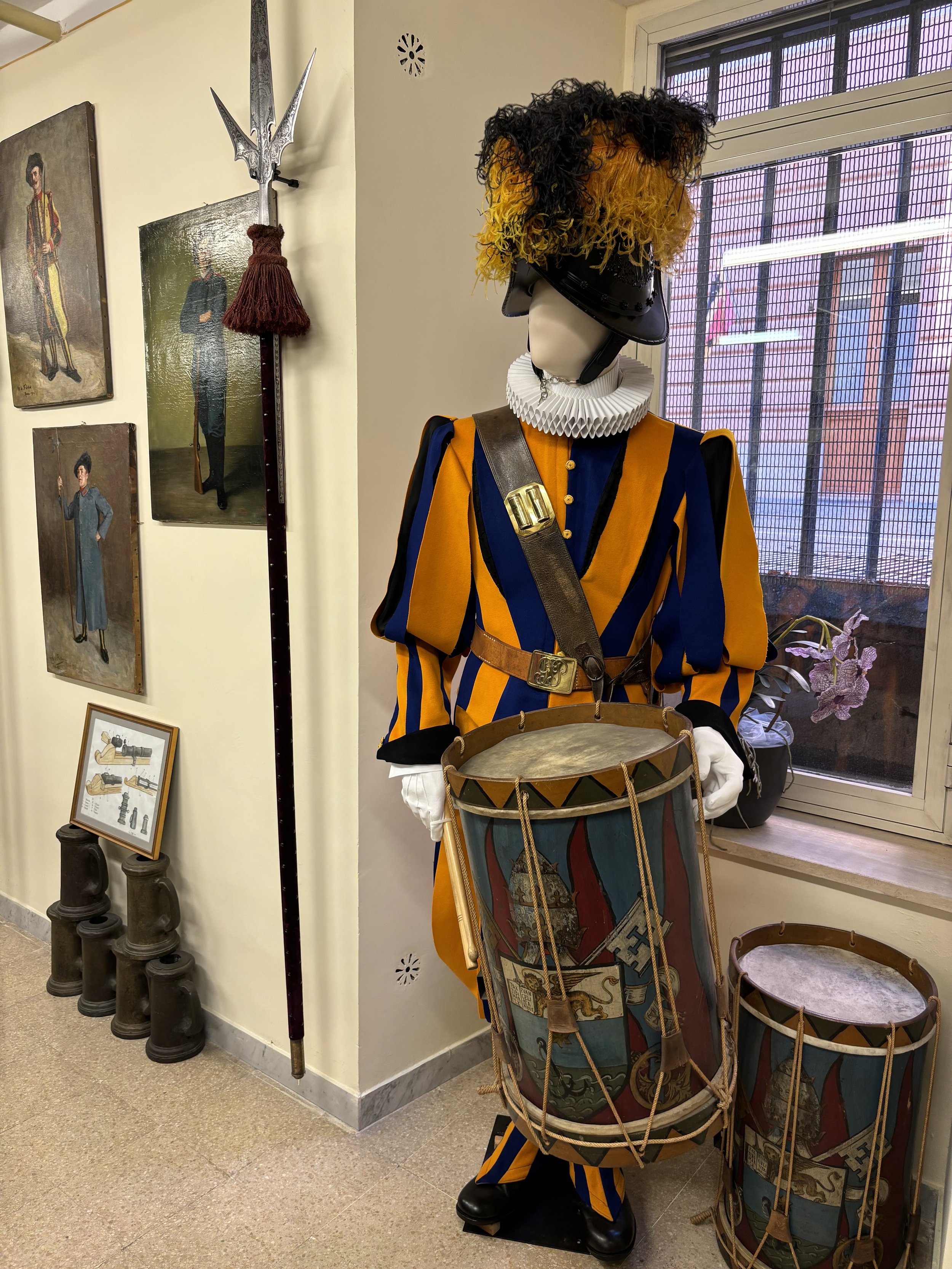
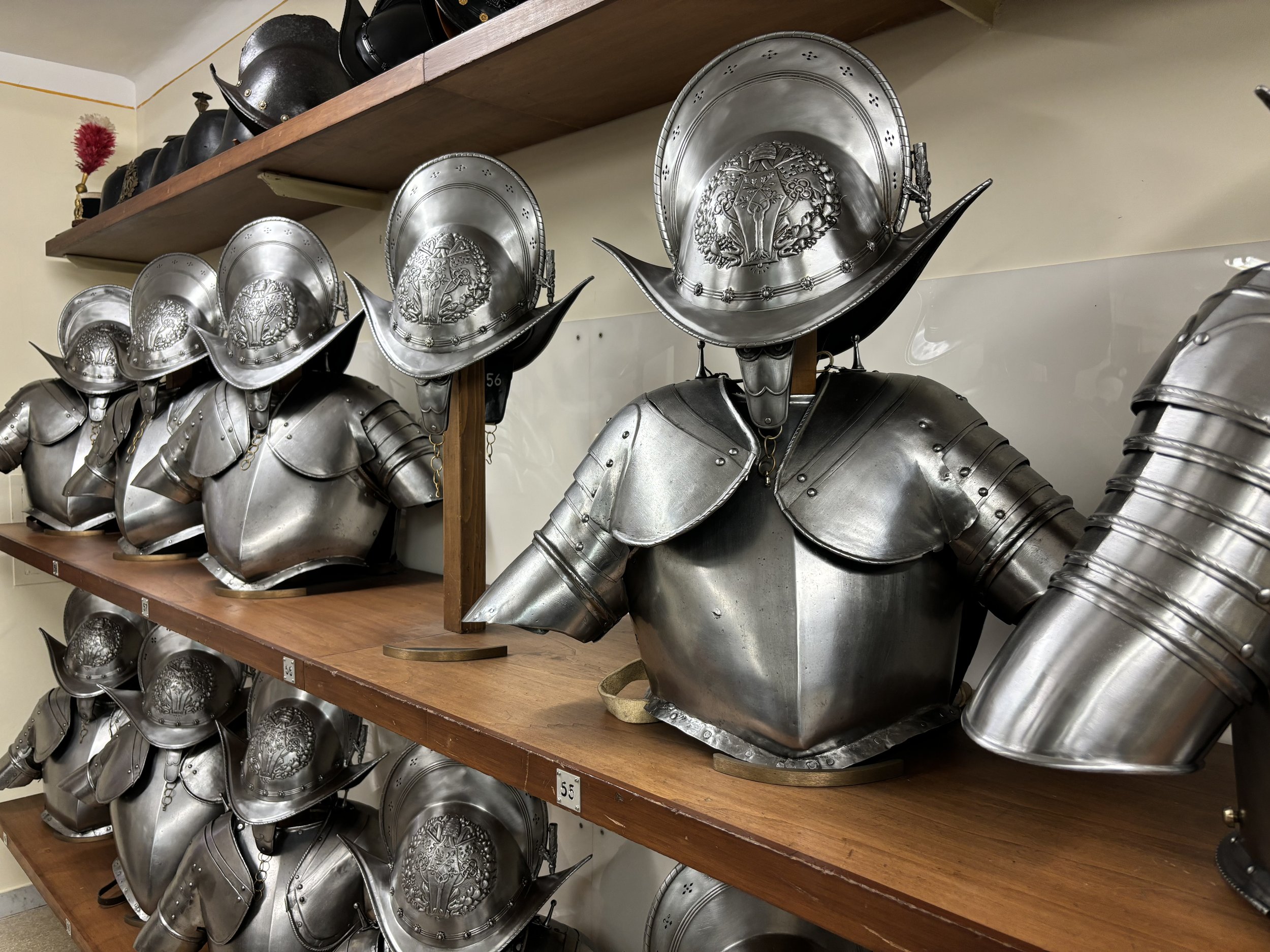
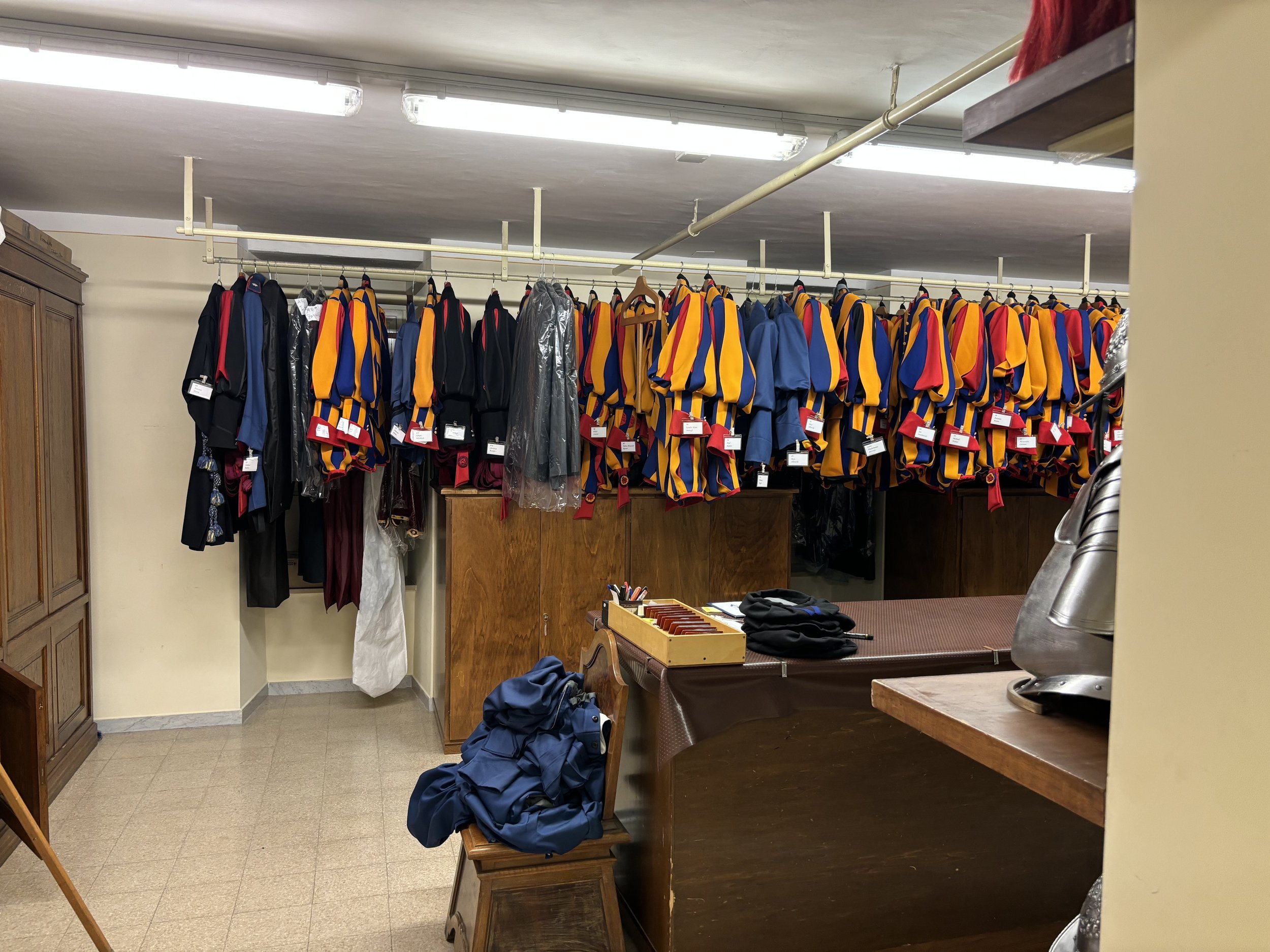
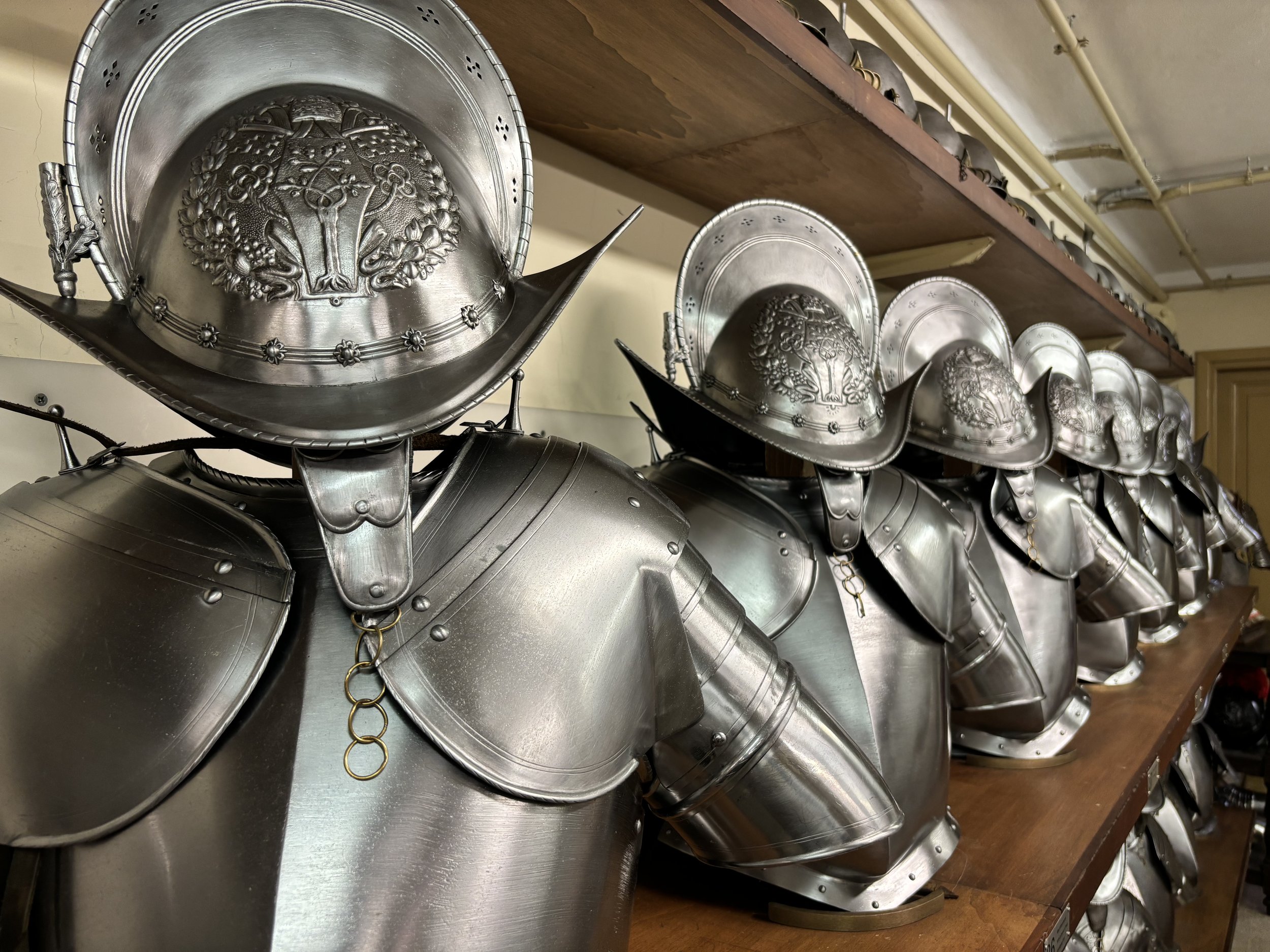

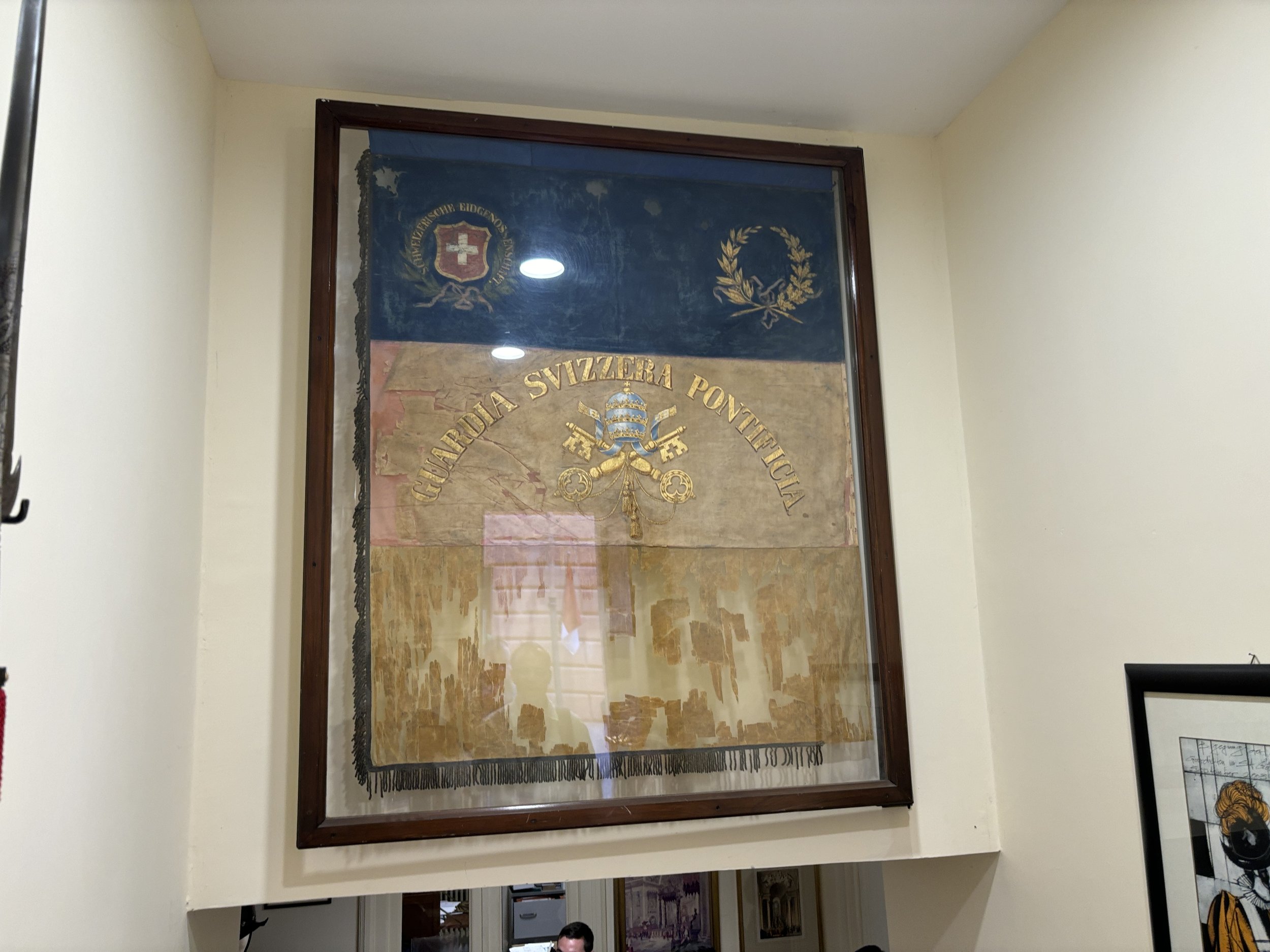
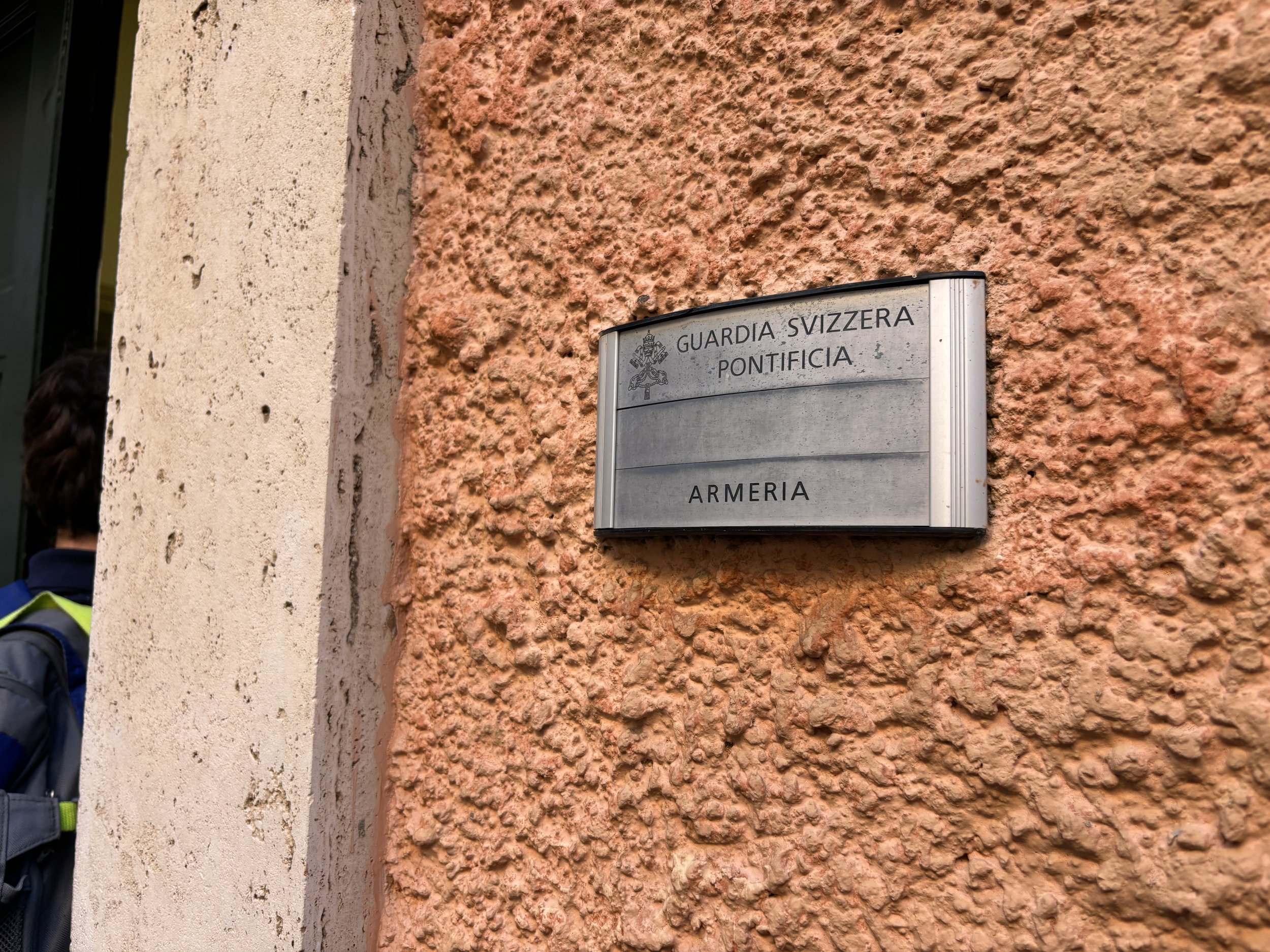
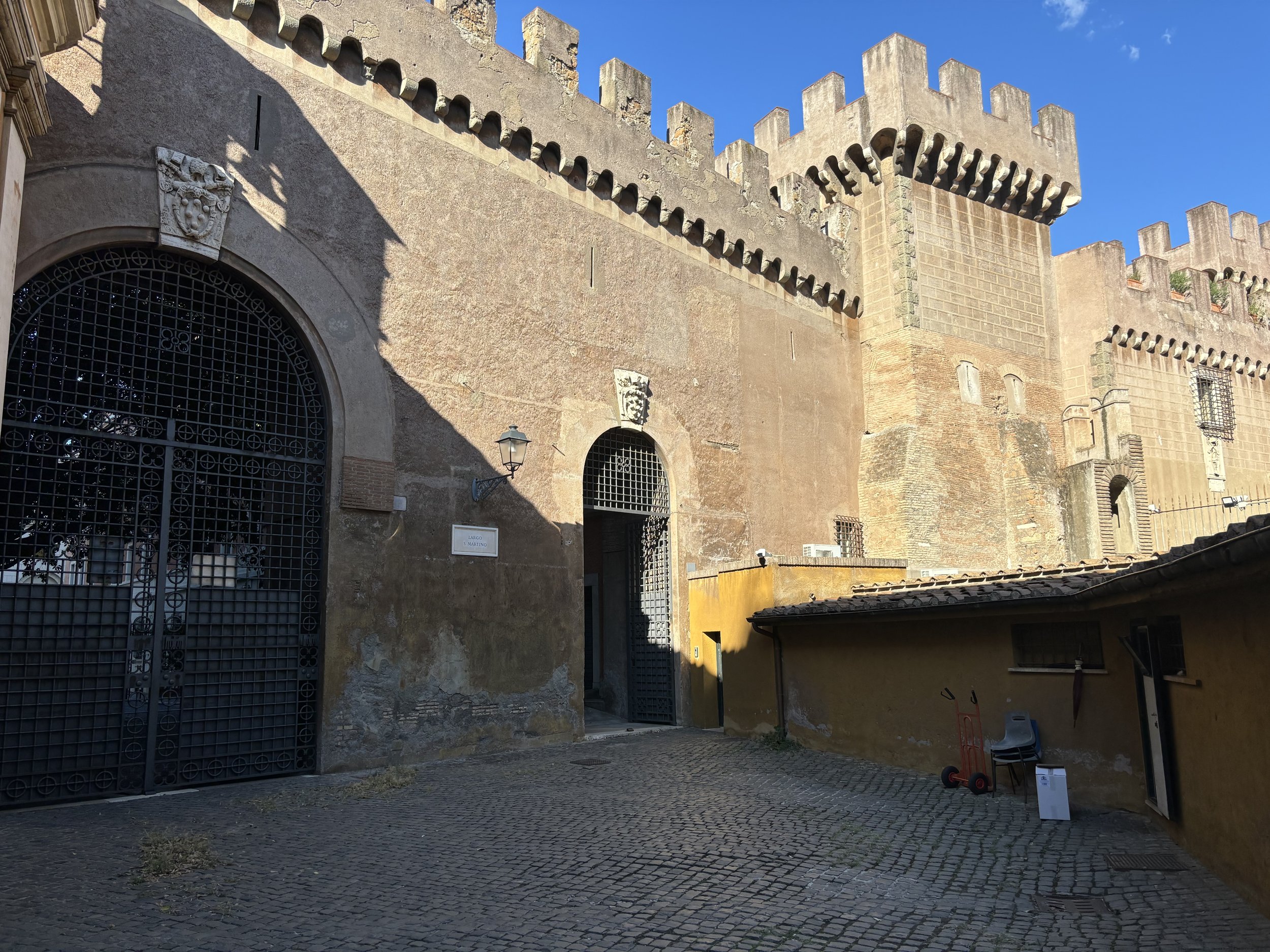
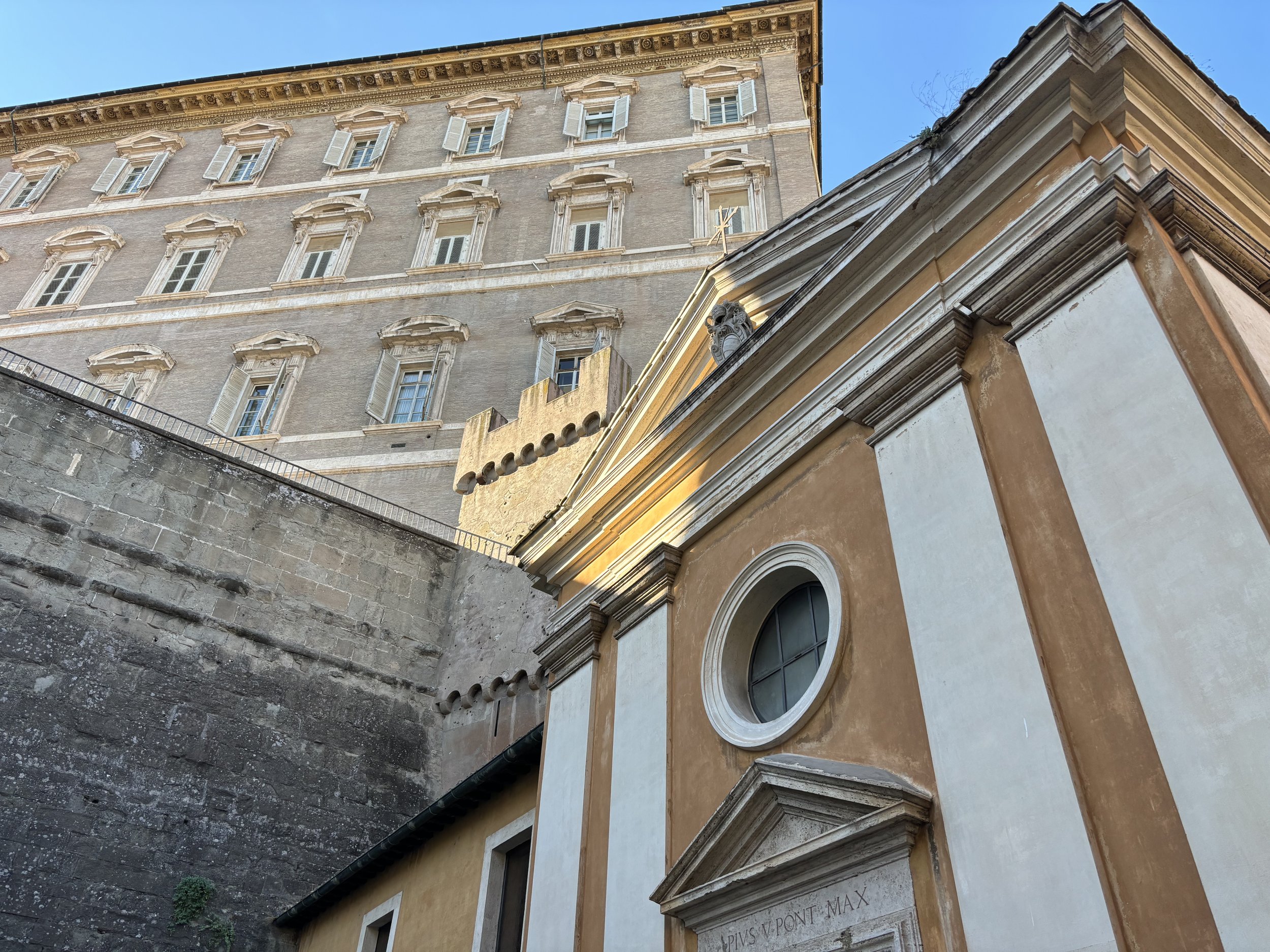
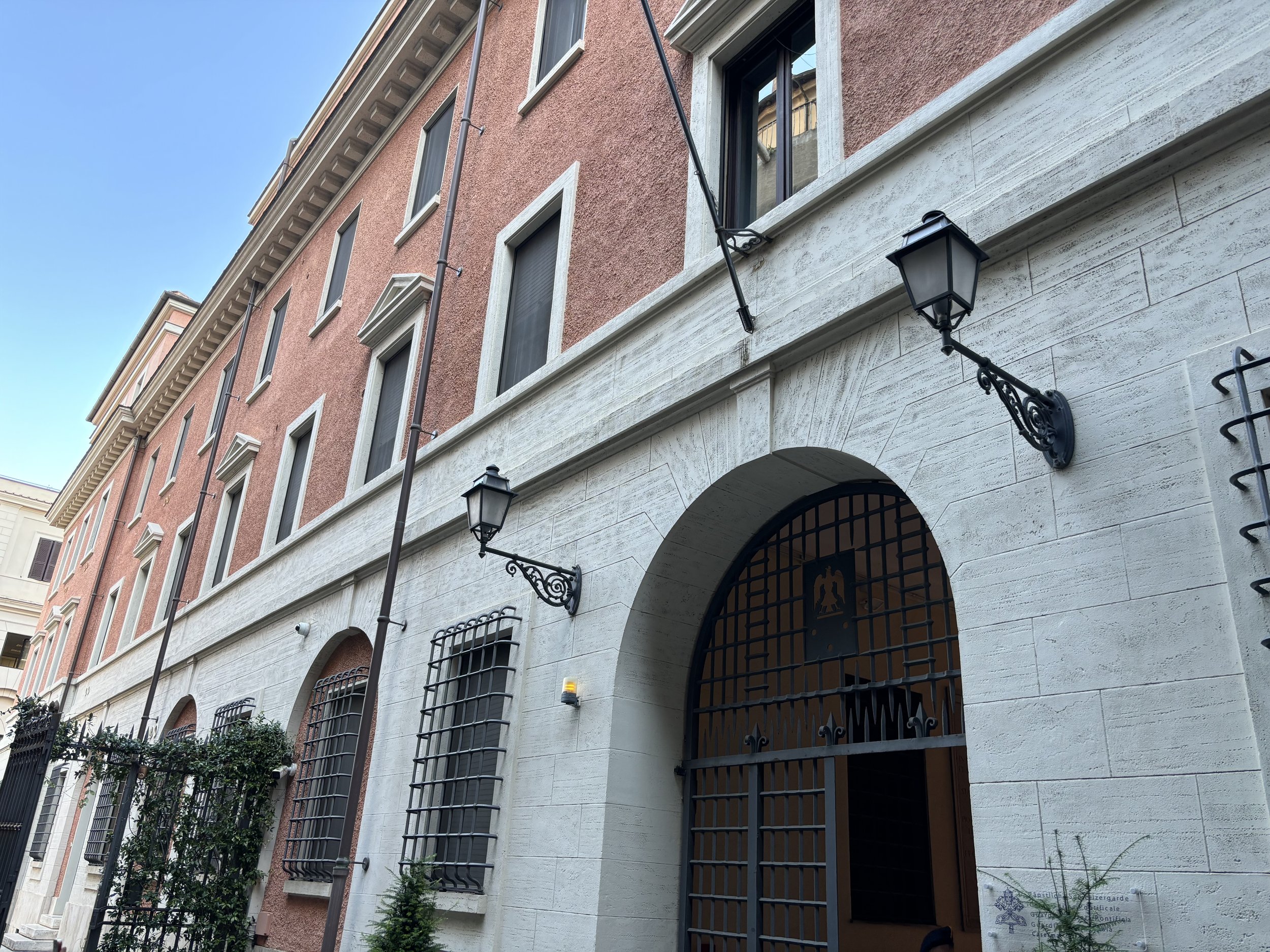
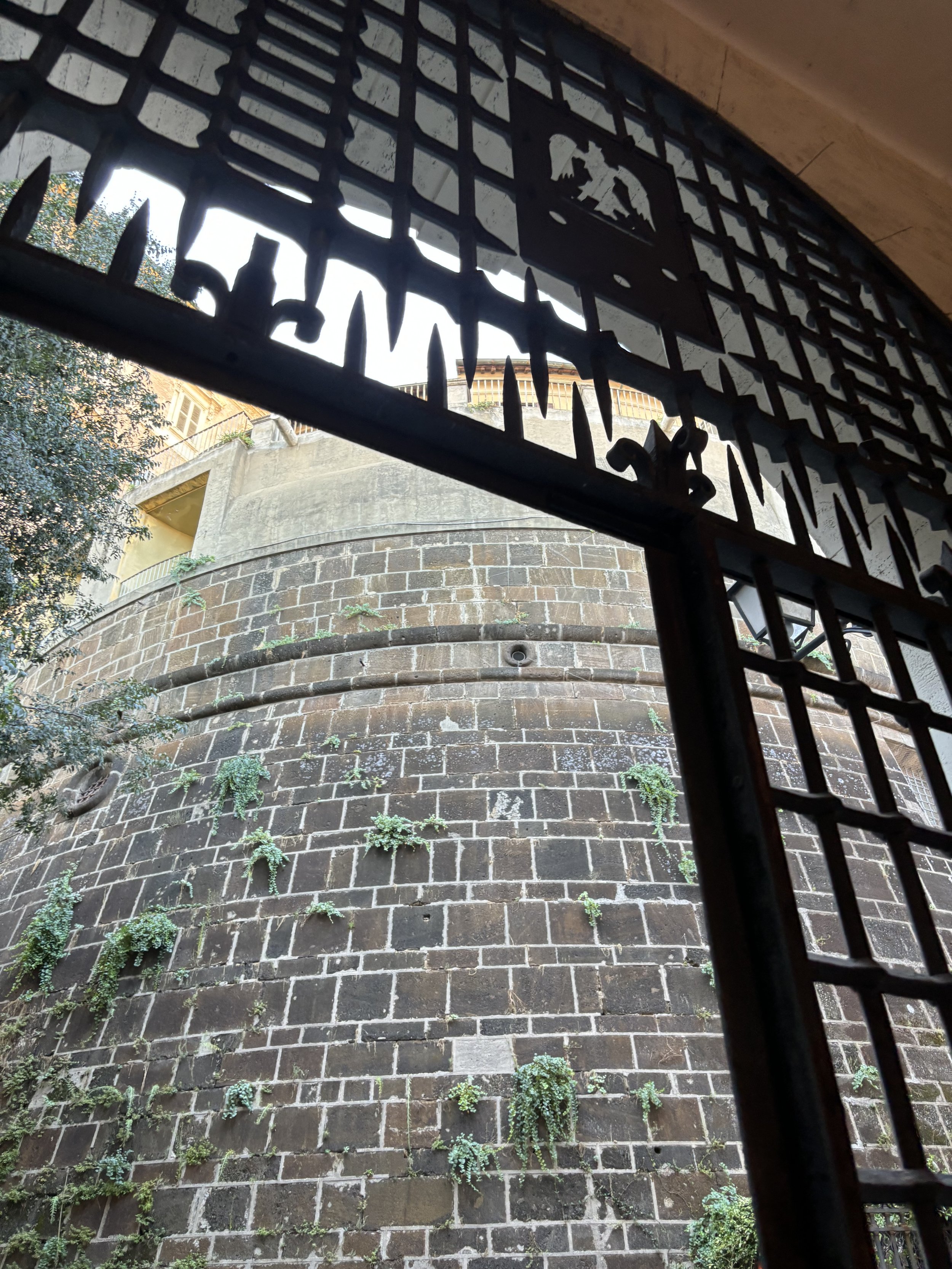
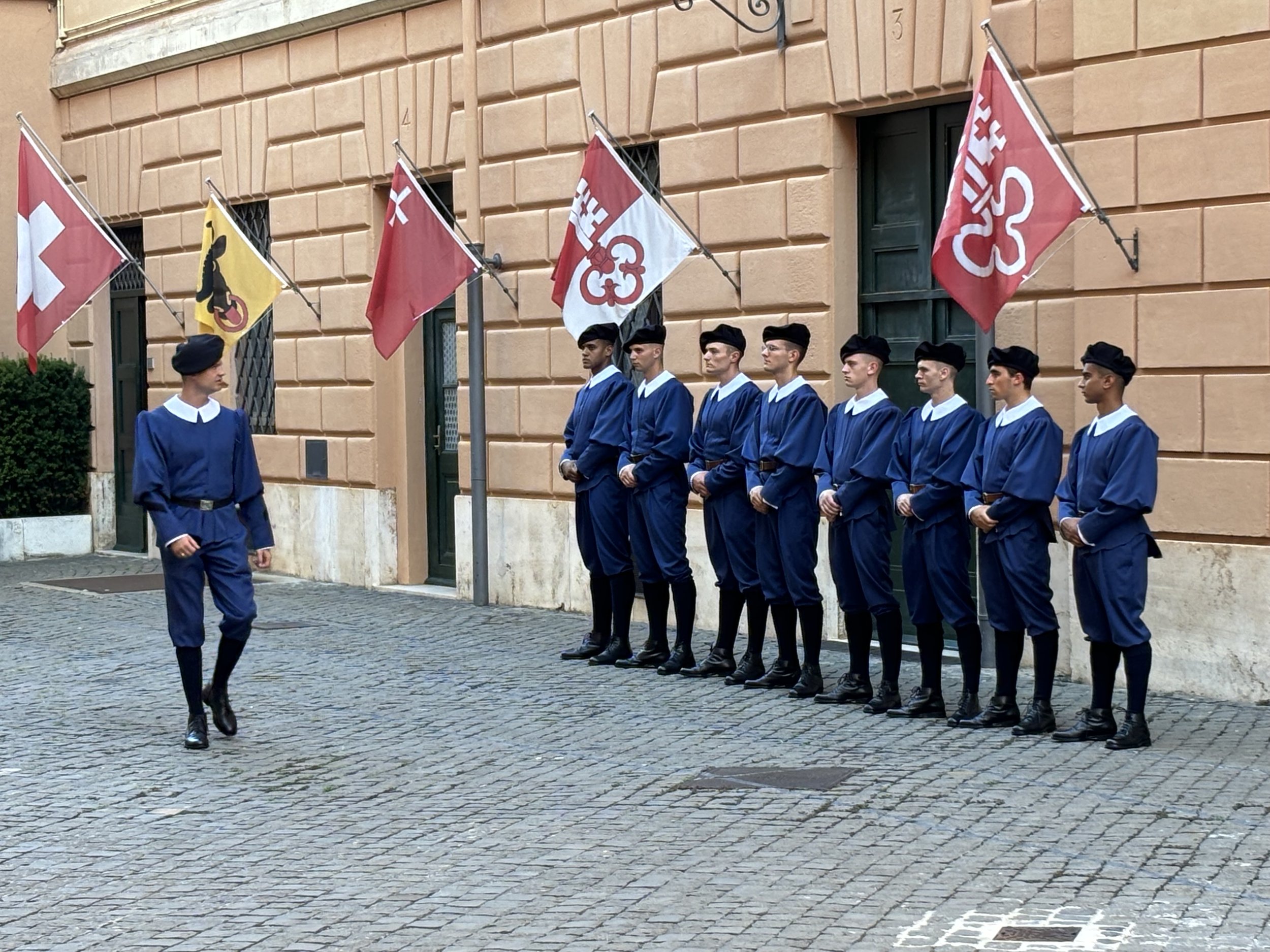
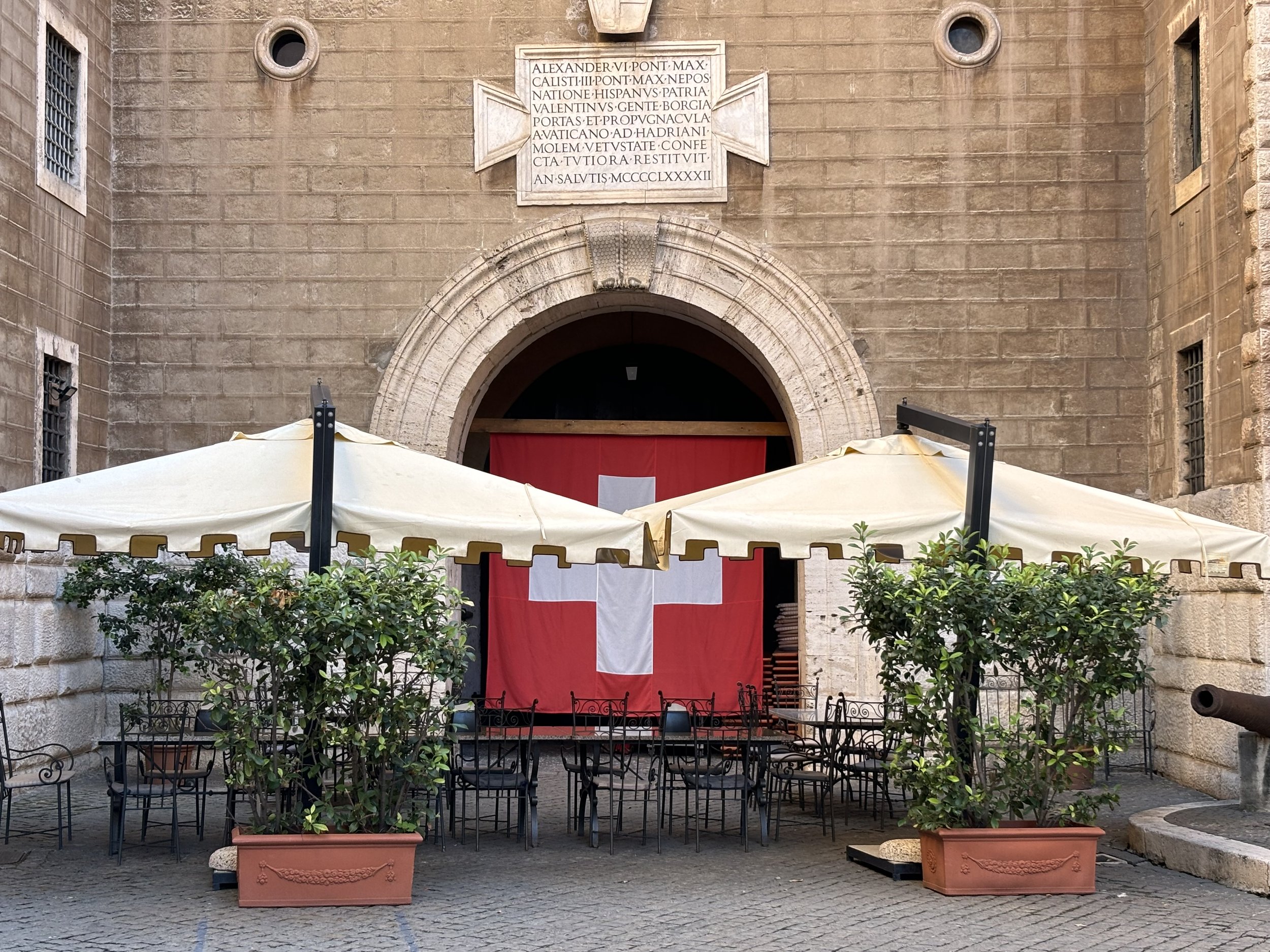
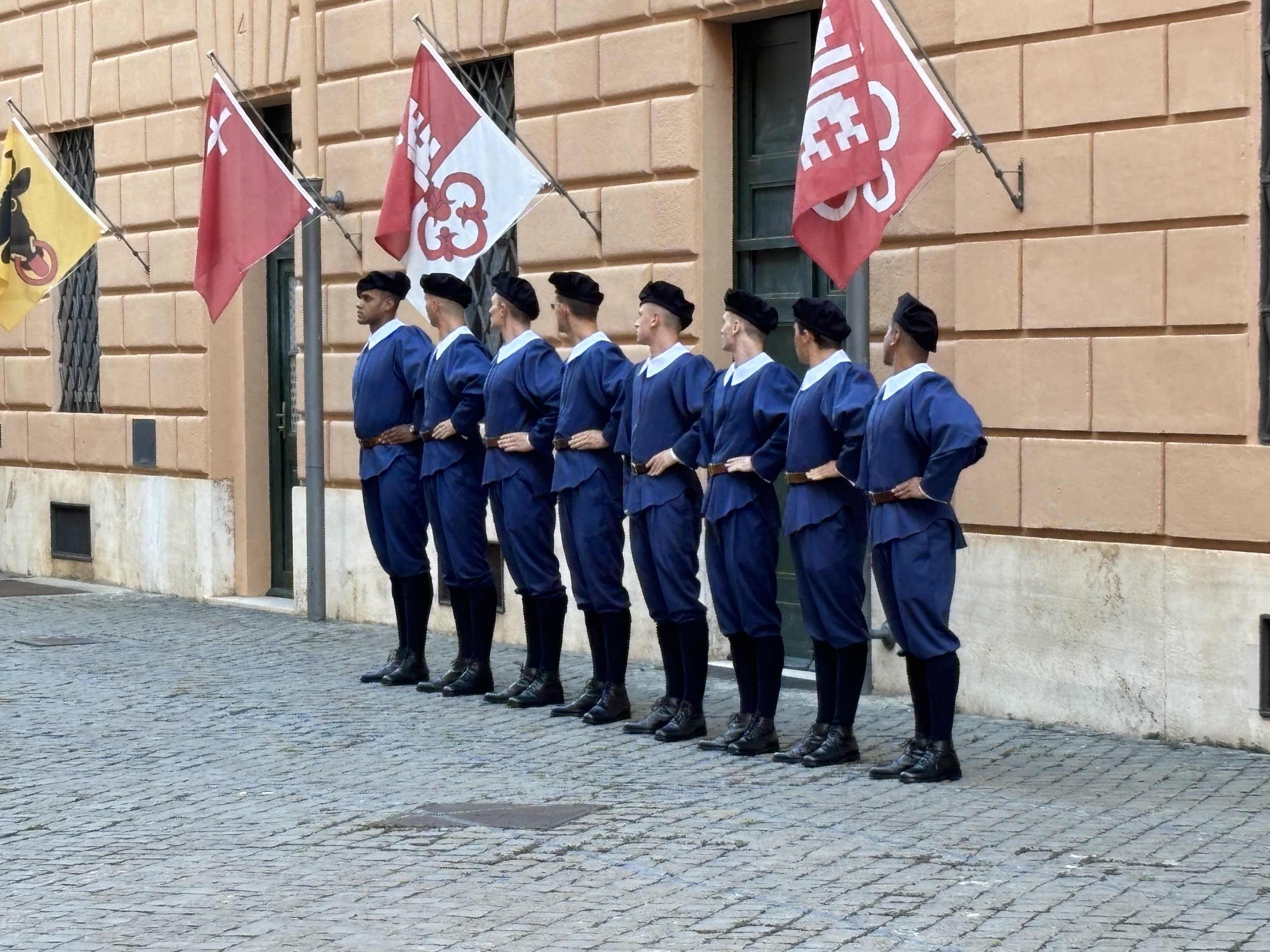
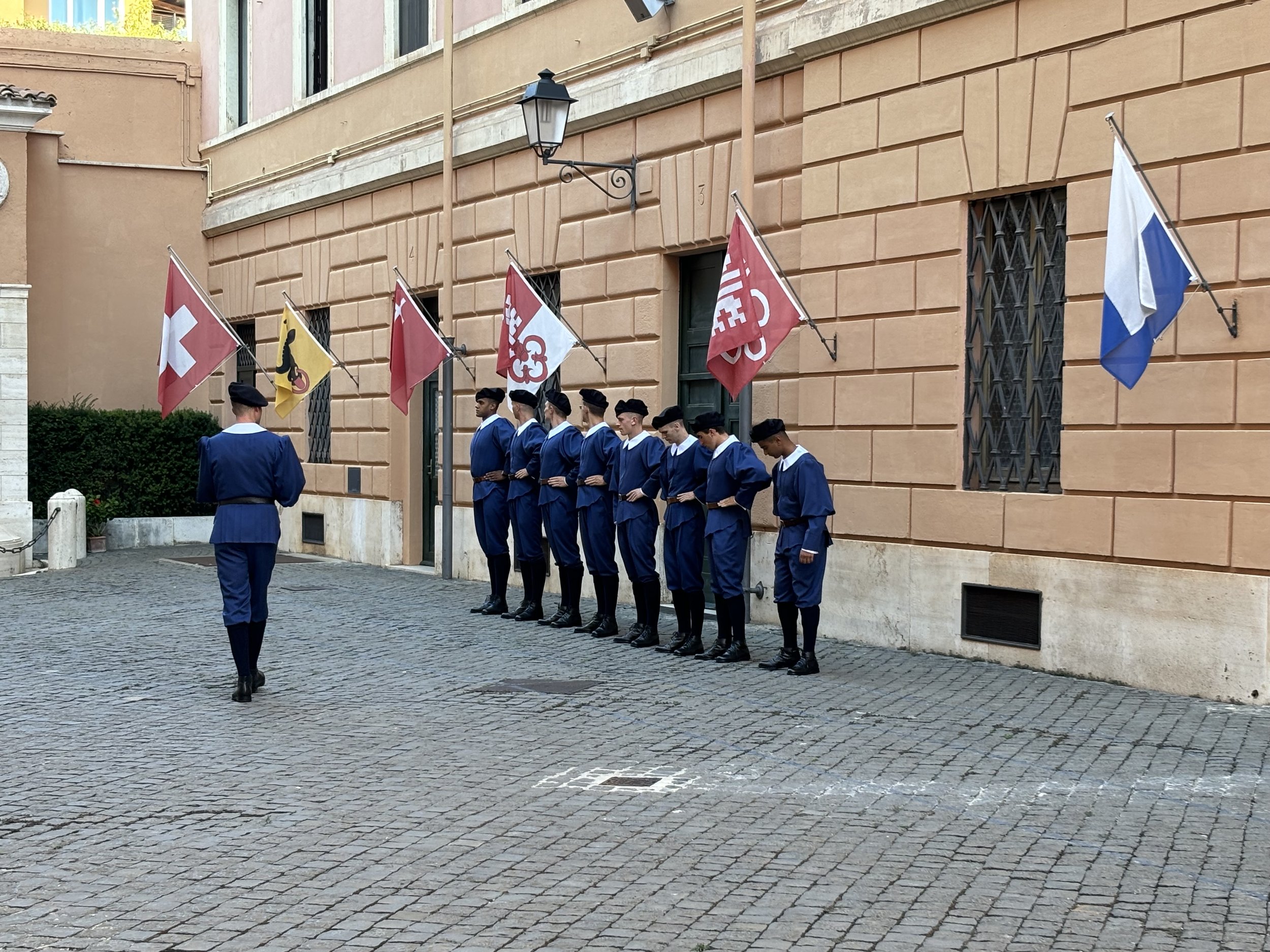
Photos by Clemente Lisi
How do you become a guardsman?
Recruits must be unmarried Swiss citizens who are Catholic males between the age of 19 and 30. They must have also completed basic training with the Swiss Armed Forces.
If accepted, new guards are sworn in every year on May 6, the anniversary of the Sack of Rome, in a pomp-filled ceremony. In all, there are 135 members of the Pontifical Swiss Guard. In 2018, Pope Francis boosted the army’s number from 110 to 135 following a series of terror attacks in Europe.
They remain one of the oldest military units that have been in continuous operation.
What are they wearing?
The dress uniform is blue, red, orange and yellow — a color scheme and design that give it a distinctly Renaissance look. With their armor, feathered helmets, ruffled collars and puffy shirts, the uniforms are both very ceremonial as well as distinct from those of any other military unit.
The Swiss Guard are equipped with both traditional ceremonial weapons and modern firearms. Since the assassination attempt on Pope John Paul II in 1981, a much stronger emphasis has been placed on the Swiss Guard’s nonceremonial functions.
The uniform’s famous colors — blue, red and yellow — are the traditional colors of the Medici family, an Italian bourgeois family who ruled Florence from 1434 to 1737.
What areas do they patrol?
The Swiss Guard is only tasked with policing Vatican City. The areas outside the Vatican’s walls are the purview of the Italian authorities.
The only place that both the Vatican and Italy patrol is St. Peter’s Square. When the pope addresses crowds there or is in the square, the Swiss Guard is responsible for that territory. At other times, the Italian police guard the area.
Some Swiss Guardsmen travel abroad with the pontiff during papal trips.
Clemente Lisi is the executive editor of Religion Unplugged. He previously served as deputy head of news at the New York Daily News and a longtime reporter at The New York Post. Follow him on X @ClementeLisi.
